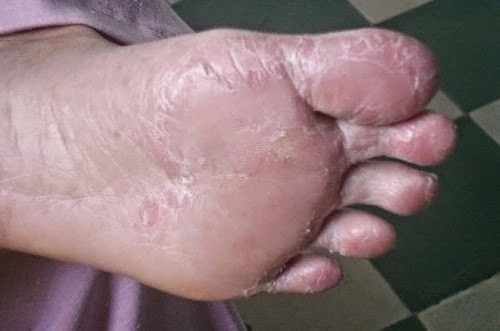Notice: If You See This on Your Feet, It May Be a Sign of Hidden Diabetes, Stay Alert

Diabetes is often called a silent condition. It can progress quietly without showing clear symptoms, but the body usually sends out small signals. One of the most important places to notice these signs is your feet. Any unusual change there deserves serious attention.
When blood sugar isn’t well managed, tiny blood vessels and nerves can be affected. The extremities—especially the feet—are usually the first to show signals. A change in color, texture, or sensation should never be ignored.
Visible Changes in the Feet Linked to Diabetes

Several early signs may appear on the feet even before diabetes is officially diagnosed. These include very dry skin, deep cracks, or dark patches that look like bruises but never fade. Such marks often point to circulation problems that require medical care.
Another concern is numbness or a loss of feeling, known as diabetic neuropathy. Without the natural warning of pain, small injuries may go unnoticed. Even a minor cut can turn into a bigger problem because healing is often slower.
Swelling and redness in the feet are also common warning signs. If they come with warmth, they may signal inflammation or infection. Since diabetes can weaken the immune system, infections are harder to fight and may become more complicated.
If you notice these symptoms, see a doctor right away. A simple blood test can confirm whether diabetes is the cause. Early diagnosis and treatment are key to avoiding long-term complications.
Taking Action Before Problems Get Worse

Managing the condition usually includes careful blood sugar control and daily foot care. This means moisturizing, checking your feet every day, and wearing protective shoes.
Lifestyle choices are also important. A balanced diet and regular physical activity help stabilize blood sugar, improve circulation, and keep your feet healthier.
For people already living with diabetes, staying watchful is essential. Even a small blister, patch of redness, or unexplained discomfort should be treated as a serious signal. Prevention and early care are the best defenses against more severe outcomes.
Many people don’t realize that these signs can appear long before advanced complications develop. Don’t wait for pain to remind you—listening to your body is your first line of protection.
Your feet can reveal important clues about your overall health. Pay close attention to them, and never underestimate the story they may be telling you.